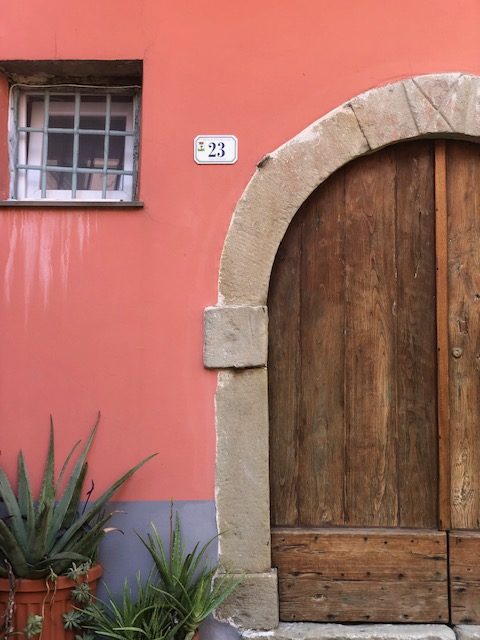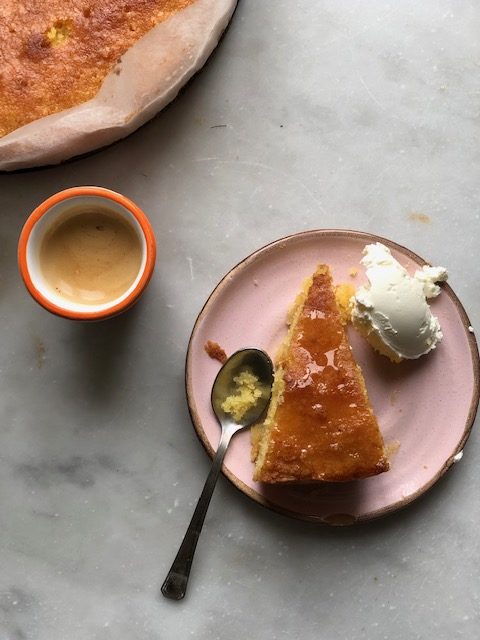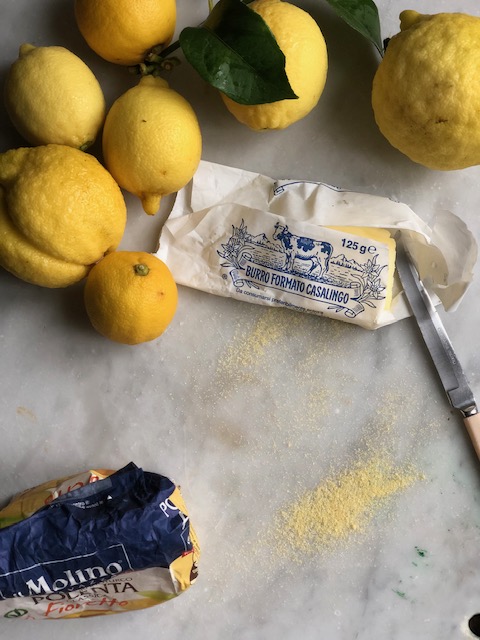

I made this polenta, lemon, and almond cake for the first time about 2 weeks ago. I’ve already had to make it again. My cravings for a repeat were louder than that of a hormonally charged pregnant woman. Ditto my hubby and kid’s. The racket was just so deafening, that I had to adhere, and get baking.
The cake is unfussy, super aromatic, and made dense by the use of polenta.
Confusingly, the word polenta is frequently used to describe the somewhat mushy dish of ground corn cooked in salted water to which butter and cheese are often added, and it is also used to describe the ground corn flour itself. While polenta the dish, can be utilized in a variety of ways – eaten hot or cold, soft or firm, baked, toasted pan-fried, deep-fried etc etc. – the use of polenta in cakes, refers simply to the inclusion of the corn flour. In cakes, polenta delivers a knockout golden colour, soaks up other flavours, and gives a gorgeous crumby texture.
Of Mexican origin, corn entered Italy through trade routes of the northeast around the 15th century, and it became a dietary staple especially in the northern regions of Veneto, Friuli, Lombardy and Piedmont. In these regions polenta has remained a kitchen main-player, and today it takes the spotlight where bread and pasta feature in the cuisine of the south of Italy.
I was curious to hear that in Italian, fine ground corn is also called granoturco or Turkish grain. Evidently, in common phraseology, anything that came from far away was once called “Turkish”. This shorthand, broad stroke language reminded me of growing up in Australia and hearing of food, tastes, styles etc being described as continental. It was a catchall label used to describe exotic things from Europe (of unspecified origin) with an implication of sophistication. Continental equalled fancy to us. To the Italians, Turkish meant coming from afar. I wonder what the label Australian might have meant to others…
Returning to the polenta cake – this recipe is a winner. It is an ever so slightly modified version of a Nigella Lawson polenta cake that swaps butter for the more typical olive oil, ground almonds for regular flour, and features lemons and polenta for character. It is a simple, solid cake that once retrieved from the oven is poked all over, and drizzled with a sharp, lemon syrup before being left to cool. The crumby grittiness of the polenta is still there under the soggy syrup making it a complex bomb texturally. It can be served warm or cold, and with a healthy blob of mascarpone, it is divine.


Polenta, Lemon and Almond Cake ~ Torta di Polenta al Limone e Mandorle
- 200g unsalted butter, softened, plus extra for greasing
- 200g caster sugar
- 200g ground almonds
- 100g fine polenta
- 1 ½ teaspoons baking powder
- 3 large eggs
- zest of 2 unwaxed lemons
- ½ teaspoon almond extract
For the syrup
- juice of 1 lemon
- 65g icing sugar
Preheat the oven to 180º C.
Line the base and sides of a 23cm springform tin with baking parchment and lightly grease the sides with butter.
Beat the butter and sugar until pale and creamy.
In a separate bowl, combine the ground almonds, polenta, and baking powder. Add some of this into the butter-sugar mixture and beat. Add one egg and beat again. Continue in this way alternating the dry ingredients and the eggs. Finally, add the lemon zest and almond extract, and mix.
Spoon the mixture into the prepared tin and bake for around 35-40mins. The cake is ready when cake tester comes out cleanish and the edges of the cake show signs of shrinking away from the sides of the tin (it’s ok if it seems a little woozy in the centre). Remove the cake from the oven, place on a wire rack to cool, leaving the cake in the tin.
To make the syrup, boil together the lemon juice and the icing sugar together in a small saucepan.
Prick the top of the cake all over with a toothpick or an uncooked spaghetti strand. Pour the warm syrup over the cake and leave to cook before taking it out of the tin.
Serve warm (my fav) or cold. The addition of a blob of mascarpone or double cream makes for extra decadence.

